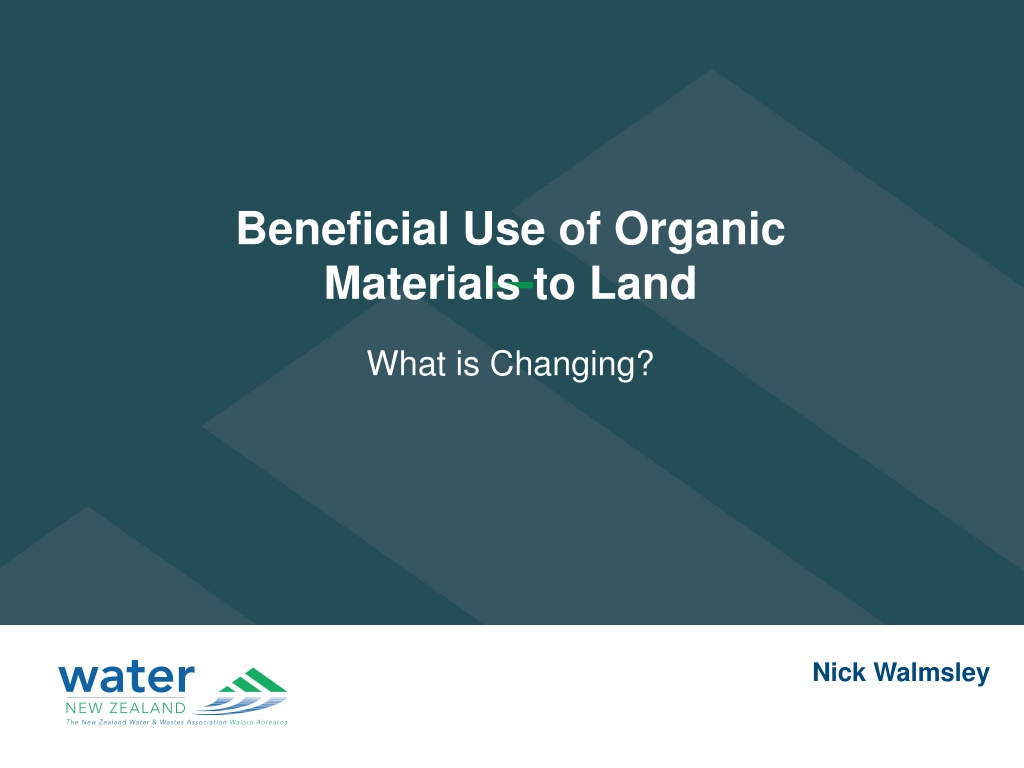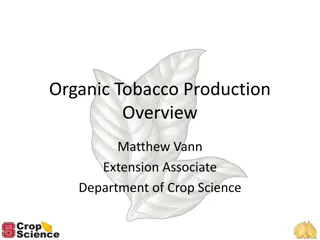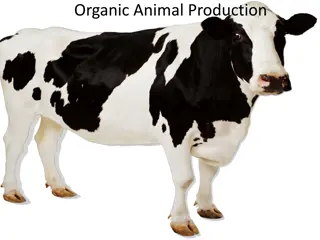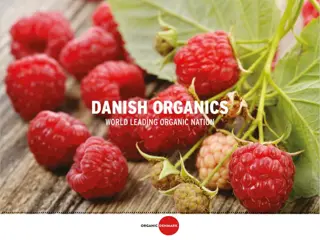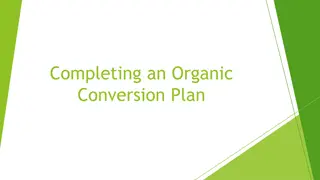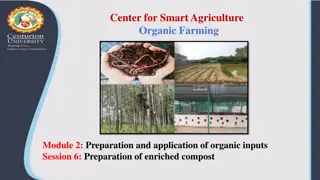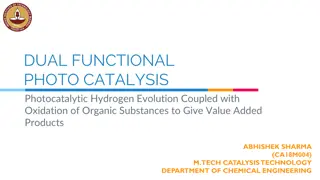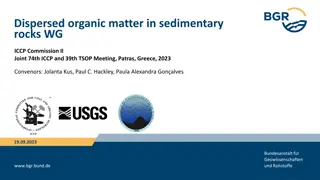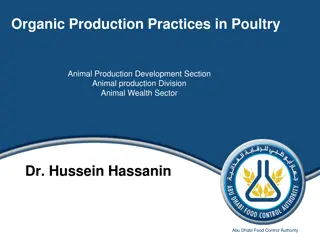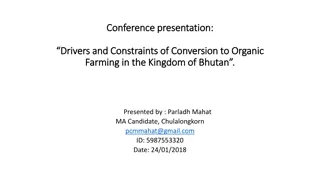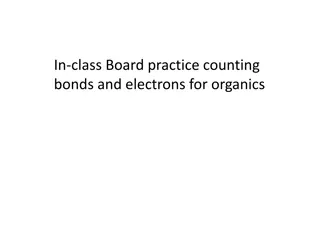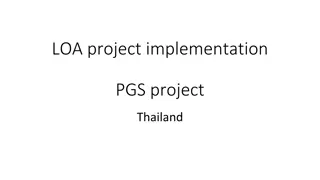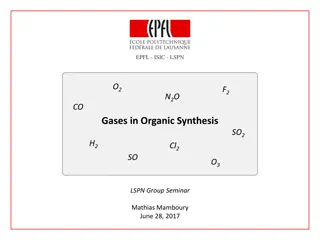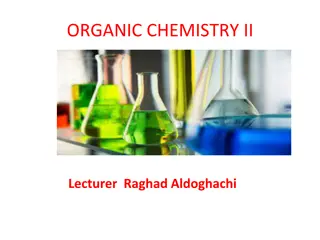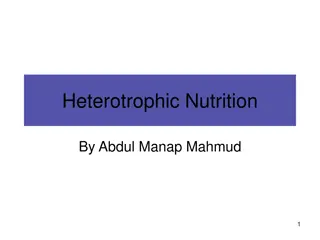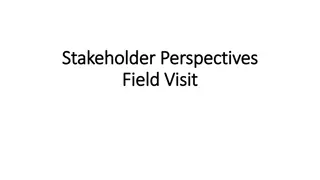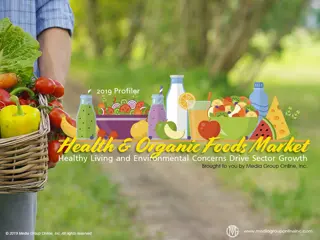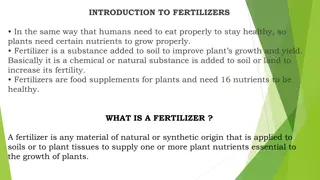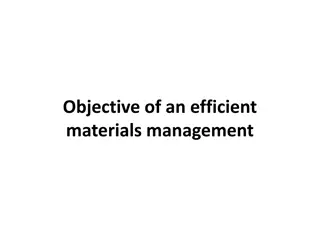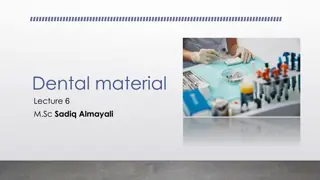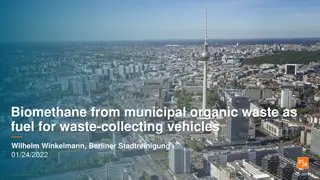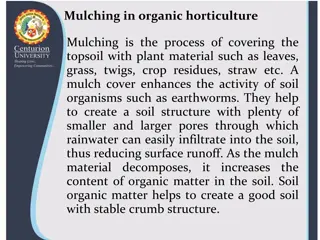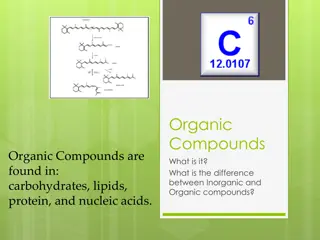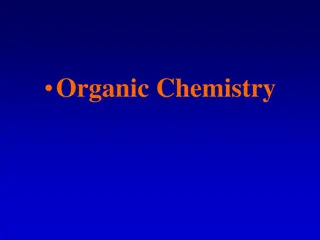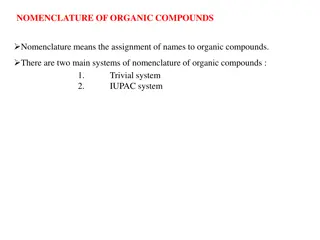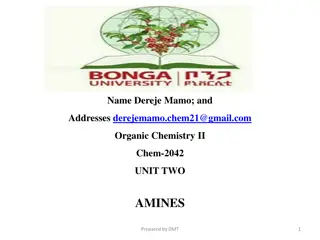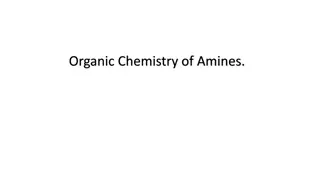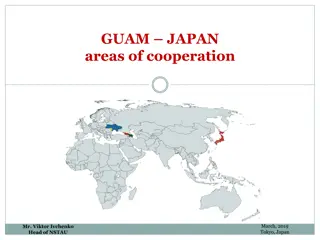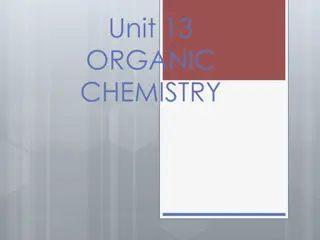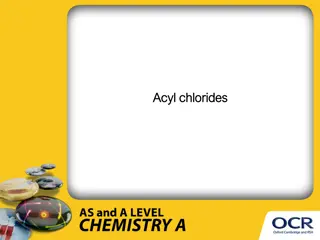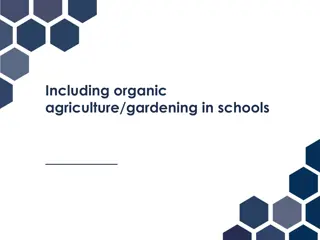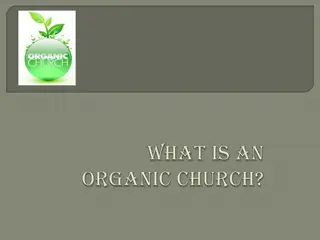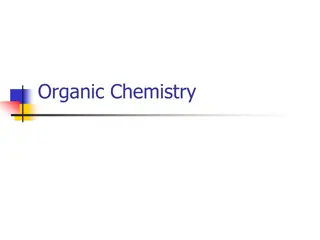The Changing Landscape of Organic Materials Management
Explore the shift towards beneficial use of organic materials in land management as highlighted by the new guide developed to establish a consistent framework. The guide aims to address nutrient cycles, contaminants, and end-use by introducing quality criteria for environmental and public health protection, effectively superseding the 2003 Biosolids Guidelines. With a focus on integrating various organic materials, this initiative involves a diverse steering group to ensure sustainable waste management practices. Learn about the covered raw organic materials and the benefits and challenges associated with their utilization.
Download Presentation

Please find below an Image/Link to download the presentation.
The content on the website is provided AS IS for your information and personal use only. It may not be sold, licensed, or shared on other websites without obtaining consent from the author. Download presentation by click this link. If you encounter any issues during the download, it is possible that the publisher has removed the file from their server.
E N D
Presentation Transcript
Beneficial Use of Organic Materials to Land What is Changing? Nick Walmsley
THE NEW GUIDE What will it do? Purpose Develop a framework that deals consistently with organic materials Recognise commonalities of nutrients, contaminants and end use Takes an integrated approach with quality criteria to protect both the environment and public health What Will it Supersede?: 2003 Biosolids Guidelines References to 2003 Biosolids Guidelines in: NZS 4454 Composts, soil Conditioners and Mulches Regional Plans, Bylaws, some agricultural guides, consent conditions?
THE NEW GUIDE Steering Group Auckland Council and WasteMinz Organic Material Sector Group; George Fietje Centre for Integrated Biowaste Research and ESR Limited; Jacqui Horswell Greater Wellington Regional Council; Paul Bruce Ministry for the Environment; Nigel Clarke Ministry of Health; John Harding Ministry for Primary Industries; Andrew Pearson NZ Land Treatment Collective and Lowe Environmental Impact; Katie Beecroft Water New Zealand; Nick Walmsley
BACKGROUND NZ Biosolids Guidelines 2003 Defined biosolids as any product that included WWTP sludge and met quality standards Included soil replacement quality standards Did not consider non-biosolids quality to land Tighter default limits from 2013 Expected to be reviewed within 5 years i.e. by 2008
ISSUES The Benefits Unlike other waste materials, good prospects exist for alternative, beneficial end-use options for organic material if well managed To fit the criteria of beneficial re-use specified in the Guide the organic material must benefit soil biological, chemical or physical properties There has been substantial increase in scientific knowledge in recent years and communities are increasingly interested in sustainable waste management Note: all organic wastes contain pathogens and other contaminants
SCOPE What Raw Organic Materials are Covered? Household organics (food waste, green waste) Paper and cardboard Primary sector related organic waste (e.g. agricultural wastes, meat wastes) Manures Sewage sludge Pulp and paper waste Biodegradable nappies and sanitary items
SCOPE What has changed? Simpler, less grades to comply with No soil limits or mass load calculation Nitrogen loading as primary control Pathogens; Same list with enteric virus replaced by human adenovirus Less verification samples required Inorganics; Same contaminants and old b grade limits Organics; No old historical compounds e.g. dioxins New compounds representing EOCs
QUALITY CRITERIA Product Standards Type Stabilisation Grade Contaminant Grade 1 A Compliant 2 B Compliant 3 A or B Non-compliant Stabilisation Grade A (Type 1) could have a Permitted Activity planning control * Grade B (Type 2) could have a Controlled Activity planning control* Grade A or B material which is non-compliant for contaminants (Type 3) should be reused under a specific resource consent or safely disposed *if applied according to the requirements of this Guide
CONTROLS Nitrogen Loadings For continual application average of 200 Kg N/Ha/year over up to two years, based on evidence that the organic nitrogen is eventually mineralised. additional applications should be based on a site specific site and crop assessment (e.g. nutrient management plan) Applications to rebuild degraded soil or to refurbish contaminated land should be limited to an application of 150 kg mineral N/Ha. Plus soil incorporation and similar management controls to NZ Biosolids Guidelines
QUALITY CRITERIA Pathogens Pathogen Standard Verification Sampling: E. Coli less than 100 MPN/g Campylobacter less than 1/25g Salmonella less than <2 MPN/g (< 1/25g) less than 1 PFU/0.25g ...(enteric viruses < 1 PFU/4g) helminth ova less than 1/4g human adenovirus Routine Sampling: E. coli less than 100 MPN/g
QUALITY CRITERIA Stabilisation Grade Sampling Frequencies Parameters to be monitored Grade Monitoring type Sampling regime E. coli Salmonella Campylobacter human adenovirus helminth ova VAR E. coli VAR VAR VAR 7 evenly dispersed grab samples per month for a 3- month period with 3 failures. If > 3 failures then the 7 following consecutive grab samples must comply. Product verification A 1 grab sample per week Routine sampling Product verification Routine sampling N/A for pathogen testing N/A for pathogen testing B
QUALITY CRITERIA Inorganic Contaminants Parameter Concentration limit (mg/kg dry weight) Arsenic 30 Cadmium 10 Chromium 1500 Copper 1250 Lead 300 Mercury 7.5 Nickel 135 Zinc 1500
QUALITY CRITERIA Organic Contaminants Parameter Concentration limit (mg/kg dry weight) Perfluoro compounds (PFOS and PFOA) 0.01 Absorbable organic halogens (AOX) 450 Polycyclic aromatic hydrocarbons (PAH sum) 5 Nonyl phenol and ethoxylates (NP/NPE) 25 Phthalate (DEHP) 75 Linear alkydbenzene sulphonates (LAS) 1500 Musks Tonalide 15 Musks Galaxolid 10
FORMAT OF THE GUIDE Volume 1 the Guide Similar management controls to previous Similar pathogen and inorganic contaminants Totally new organic contaminants to be measured; No longer measure banned substances e.g. Dioxins Measures compounds representative of emerging organics e.g. Herbicides, antibacterials, fungicides No soil replacement standards Nitrogen loading limits as control Volume 2 Technical Support Information Technical reports supporting proposed limits, consultation advice, legislation summary,
PROGRAMME Timing of Development Public draft issued shortly Open invitation for comments Open workshops Meetings with specific stakeholders, particularly those for agricultural industry groups Publish end 2016/ early 2017?
+64 4 472 8925 nick.walmsley@water.org.nz www.waternz.org.nz
